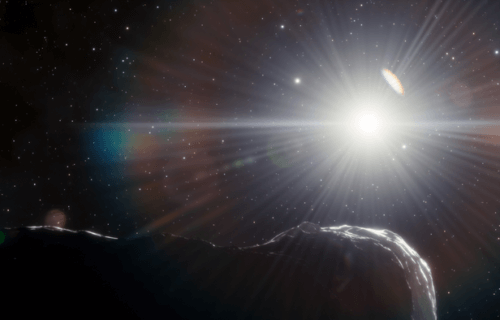COQUIMBO, Chile — The plot of many sci-fi films may be happening in real life. Astronomers have detected three near-Earth asteroids hiding in the inner solar system. One is the largest cosmic object detected in the last eight years, which could potentially devastate the planet.
All three asteroids are in a region inside the orbits of Earth and Venus. They almost went undetected because they were behind the glare of our fiery Sun. However, an international team of astronomers was fortunate to take a glimpse of this particular region at twilight, when there is a brief period of favorable viewing conditions.
The three asteroids are all considered “near-Earth asteroids” (NEAs), but some are more worrisome than others. The first is a 1.5-kilometer-wide asteroid named 2022 AP7 that scientists warn could one day interact with Earth’s orbit. The other asteroids, 2021 LJ4 and 2021 PH27, are not projected to collide with our planet. However, astronomers are paying special attention to 2021 PH27 because it’s the closest asteroid to the Sun. The short distance from our home star means that its surface may be hot enough to melt lead during its orbit.
“Our twilight survey is scouring the area within the orbits of Earth and Venus for asteroids,” says Scott Sheppard, an astronomer at the Earth and Planets Laboratory of the Carnegie Institution for Science, in a media release. “So far we have found two large near-Earth asteroids that are about 1 kilometer across, a size that we call planet killers.”
Sheppard adds the discovery of these three near-Earth asteroids is interesting since there’s not many with similar sizes left to find in our solar system.
“Only about 25 asteroids with orbits completely within Earth’s orbit have been discovered to date because of the difficulty of observing near the glare of the Sun.”
It’s actually harder to find asteroids closer to home
Finding asteroids requires a lot of hard work and a bit of luck. There are only two 10-minute windows of opportunity where conditions are optimal to view space without the Sun’s bright glare. Moreover, most observations are near the horizon and astronomers may have to look past a thick layer of Earth’s atmospheres which can distort the telescope’s view.
The astronomers in Chile relied on the DECam to capture a glimpse of the asteroids.
“Large areas of sky are required because the inner asteroids are rare, and deep images are needed because asteroids are faint and you are fighting the bright twilight sky near the Sun as well as the distorting effect of Earth’s atmosphere,” explains Sheppard. “DECam can cover large areas of sky to depths not achievable on smaller telescopes, allowing us to go deeper, cover more sky, and probe the inner Solar System in ways never done before.”
The further away from Earth, the easier it is to see asteroids. In this case, however, astronomers were successful in finding nearby asteroids. Not only does this research keep tabs on potential dangers hurdling toward Earth (we don’t want to repeat what happened with the dinosaurs), but it also gives scientists a better understanding of how asteroids travel in the inner solar system. Additionally, it gives more information on how gravitational interactions and the heat of the Sun can affect their orbit.
“Our DECam survey is one of the largest and most sensitive searches ever performed for objects within Earth’s orbit and near to Venus’s orbit,” notes Sheppard. “This is a unique chance to understand what types of objects are lurking in the inner Solar System.”
The discovery is published in The Astronomical Journal.

